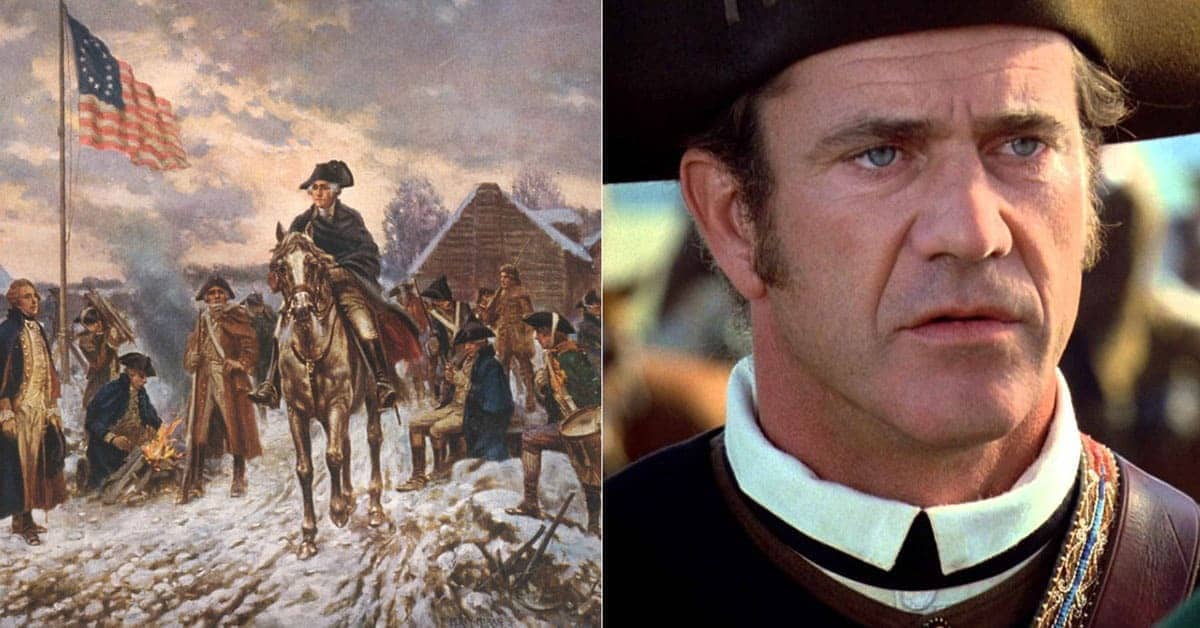For reasons unknown except perhaps to Hollywood producers, the American Revolutionary was has received short shrift when it comes to feature-length films. When movies covering the Revolutionary War period have been produced they have often followed clichés; Washington as a bewigged demigod with blue coat and white horse; Benjamin Franklin as almost hopelessly wise and respected and bespectacled; American citizen-soldiers using unconventional methods to give the Redcoats a sound thrashing; the populace responding to Yankee Doodle with full-throated support of liberty and independence.
The politically nuanced and socially complex period of the American Revolution is simply too complicated for most films to present honestly, and those that tried have too often succumbed to trivialization. As history, few approach an accurate accounting.
The American Revolution was but one theater in a global war for empire which eventually included conflicts in India, the Levant, and the Caribbean, involving France, Spain, the Netherlands, the Russian Empire, and dozens of Native American tribes. Americans, non-surprisingly, tend to focus narrowly on the villages of New England, the 4th of July, and Valley Forge.
While none of these lacked for drama and all contain stories yet to be told in film, too often movies which even hesitantly nod to the American Revolution repeat the same hackneyed scenes containing the same hackneyed myths.
Motion pictures featuring the American Revolution as their setting usually focus on fictional personal stories interwoven into the war’s dramatic events, with historic personages often used as emphasis for the story. Here are some examples of motion pictures which use the American Revolution as a backdrop, blending a portion of its epic story with that of their own.


Johnny Tremain
A Walt Disney production from the 1950s, when the studio was flush with the success of its Davy Crockett films and the resultant national craze, Johnny Tremain is based on a Newbery Medal-winning novel published at a time when children’s novels were still read by children.
The film depicts events in pre-revolutionary Boston through the eyes of a young silversmith’s apprentice by presenting his interactions with the leaders of Boston’s rebellious factions. Paul Revere is a character of note, as is the nearly forgotten to American history Dr. Joseph Warren, who did more to shape events than the far more famous Samuel Adams and John Hancock.
The historical characters in the film largely stick closely to their real-life counterparts, and the hero – a silversmith’s apprentice named Johnny Tremain – interacts with them in a manner of an unobtrusive observer and only occasional contributor to the historical sequence of events. Characters such as Revere and Warren are allowed to go about their daily business without their dialogue reduced to uttering platitudes. Warren is depicted as a respected surgeon in Boston – which he was – and Revere’s skill as an artisan and tradesman are given greater exposure than his adroit delivery of messages on horseback.
In the end, Johnny is offered the ability to return to his hoped-for profession – silversmith – as well as being able to serve in the newly formed Continental Army. Johnny Tremain does not delve into the issues of the Revolution beyond those which occurred in Boston during the early 1770s, and it breaks no new ground towards understanding the causes of the conflict. Nor does it overstate them to the point that its characters become caricatures.

